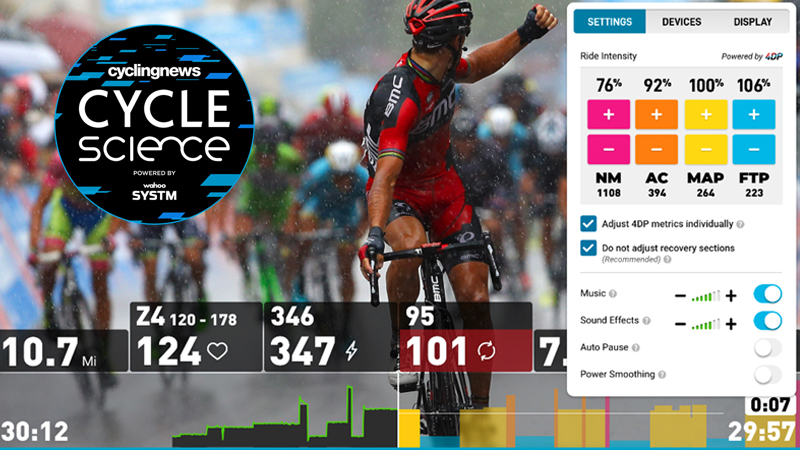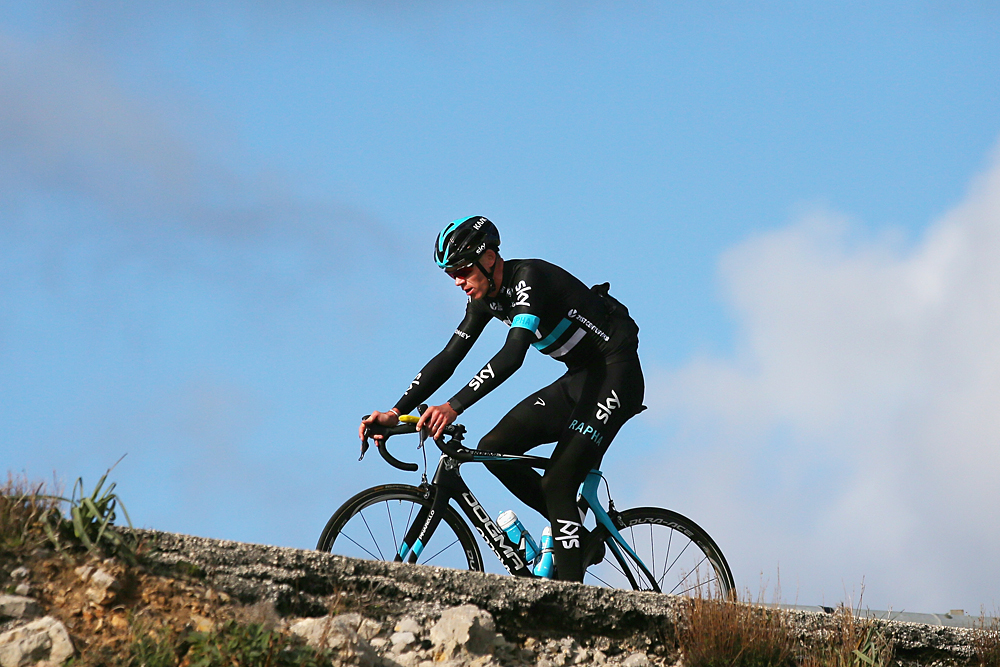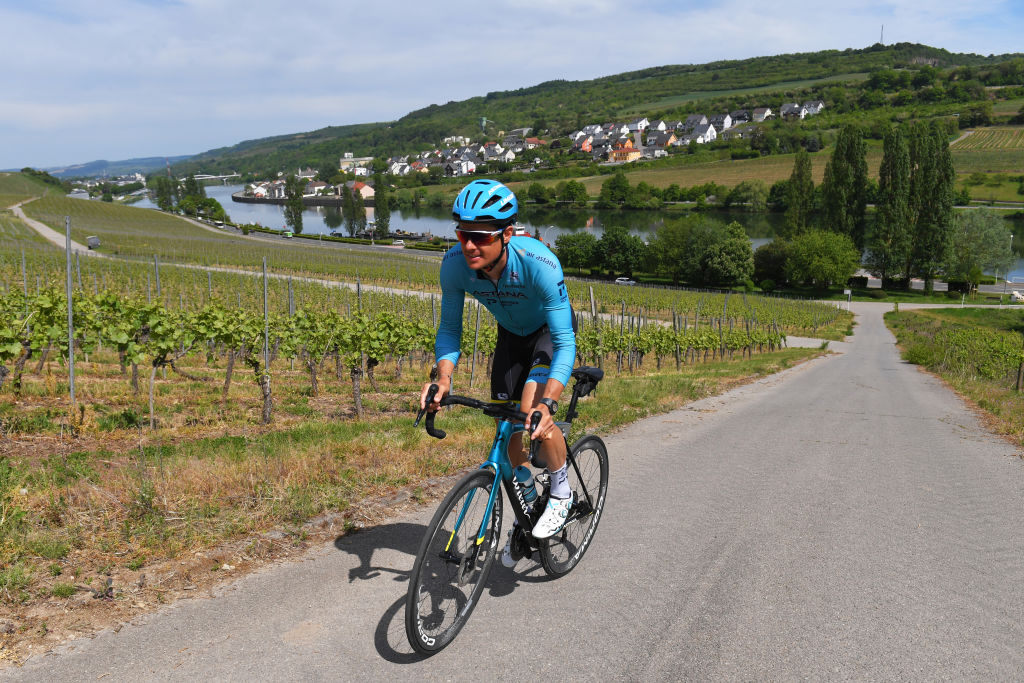Interval training: What it is and why it works
The science behind interval training in cycling and why it’s the best way to get fit fast

Interval training is defined as alternating short bursts of exercise with rest periods at regular time intervals. For example, a classic cycling interval session involves four sets of riding hard for eight minutes, then riding easy for four minutes in between. Most cycling intervals workouts consist of a warm-up, one or more sets of high-intensity intervals divided by rest periods, and a short cool-down.
In cycling, interval training can take on many different forms and cover the entire power profile of an athlete. Power profile refers to a cyclist’s maximum power output over a given duration, such as 10 seconds or 20 minutes.
It’s important to note that interval training doesn’t have to be power-based. Before power meters, many cyclists used heart rate monitors and heart rate zones to guide their interval training. Interval training doesn’t need to be fancy either – you can do intervals based on feel alone. Using the RPE (rate of perceived exertion) scale, you can measure your effort on a scale of 1 to 10, with 1 being ‘as easy as possible’ and 10 being ‘as hard as possible.’ No technology needed.
Interval training is one of the key facets of cycling, from first-time racers to Tour de France professionals. But why is interval training so popular, why does it work, and should you be doing interval training?

Science behind interval training
“The human body works in a way that you get stronger, faster, and fitter by fatiguing yourself in specific ways,” explains Ian Boswell, winner of the 2021 Unbound Gravel. You focus on interval training to improve areas of weakness – interval training is, by far, the best way to improve both your general and specific fitness, Boswell continued.
More than just alternating time periods, intervals are designed to spur physiological adaptations, as well as improve cycling fitness and performance. The target-driven nature of intervals (e.g. a threshold interval performed at 100 per cent of your FTP) was created to train specific energy systems, including the aerobic and anaerobic systems.
Interval training is also designed to give you a bigger training load in less time (more bang for your buck), and break up the monotony of pedalling and steady-state intervals. The science behind interval training is complex, but let’s take a look.
Get The Leadout Newsletter
The latest race content, interviews, features, reviews and expert buying guides, direct to your inbox!
There are three different energy systems in the human body – the phosphagen system, glycolytic system, and oxidative system – all of which can be trained and improved. The phosphagen, or ATP-PCr system, powers short anaerobic (without oxygen) bursts or energy such as sprints. The glycolytic system power medium-length efforts of 30 seconds to five minutes. And the oxidative system powers long, endurance efforts lasting six minutes to multiple hours.
It is important to note that all three energy systems are working all the time; none are ever operating at zero per cent. It’s just that at a given exercise intensity, one energy system will be the main contributor, while the other two will play minor roles. During a sprint, for example, the phosphagen system contributes ~95 per cent of the energy fuel, while the glycolysis and oxidative systems contribute two to three per cent each.
Most interval training sessions are designed to target one of these energy systems, and improve cycling performance over a specific duration. A two x 20 minute interval session at 90 per cent FTP will train the oxidative system, while a six x 12-second sprint session will train the phosphagen system.
Some interval sessions will overlap, stimulating multiple energy systems during the same interval. “40/20s” is a perfect example of this, where the rider sprints for 40 seconds, rides easy for 20 seconds, and repeats for 5-10 minutes per set. The 40-second sprint targets both the phosphagen and glycolytic systems, while the repeated efforts target the oxidative system.
Why interval training works
“Repeatability is much more manageable for the human body,” Boswell said. The former WorldTour rider then explained how interval training allows you to complete more time at a given power/effort target than you would in a single effort. This means that you can increase the training load on a given energy system and get more out of your training in much less time.
For example, it is extremely difficult, if not impossible, for a cyclist to hold their VO2 Max power for more than 10 minutes. But an interval training focused on VO2 Max power could include a larger workload at VO2 Max than a single effort alone. For example, a common VO2 Max interval session is 5 x 3 minutes, for a total of 15 minutes spent at VO2 Max. This stresses your VO2 Max energy system more than just a single 10-minute effort at VO2 Max, if you could even complete it.

How interval training works
“The beauty of interval training is in its efficiency,” Boswell continued. Through interval training, cyclists can measure and improve their performance in key performance areas, especially those utilised in their goal events. These time-efficient workouts are much more effective than unstructured riding at strengthening specific energy systems, which makes them ideal for time-crunched cyclists.
Each type of interval – threshold, sprint, VO2 Max, etc. – will target a certain physiological system and your overall fitness. Interval training allows you to target one or more of these specific energy systems in a sub-60 minute workout, helping you get the most out of your riding in little time.
In order to get the same fitness gains from low-intensity, steady-state riding, you would need to train two or three times as much in total volume. Not only does interval training improve your fitness faster and more efficiently than unstructured miles, but it also can be focused on energy systems specific to your goal event.

Should everyone do interval training?
Interval training is not meant for every cyclist. Commuters, for example, needn’t worry too much about interval training, unless they’ve been struggling up a nasty hill on their way to work. If you’re looking to improve your fitness and cycling performance, then interval training is perfect for you. But if you’re just trying to get from A to B, there’s no need.
In terms of racing, almost every type of bike racer can benefit from interval training, although it is more important for some versus others. Ultra-endurance cyclists are the group least likely to directly benefit from interval training – while the high-intensity bits may increase their FTP or VO2 Max, those are energy systems that they’re rarely going to utilise.
Ultra-cycling and bikepacking are all about endurance – the only time you’ll ride harder than Zone Two is up a very steep climb. Besides that, all that matters is your all-day riding pace.
Any cyclist can benefit from interval training, but it is racers who will benefit the most. In essence, bicycle racing is unstructured interval training. You ride hard, then easy, then fast, then easy, then hard, then harder, and then hardest all the way to the finish. From road racing and criteriums, to cross-country mountain bike, cyclo-cross, and gravel racing, this is the blueprint for most bike races.
Interval training is meant to simultaneously increase your fitness, while also preparing you for the high-intensity, on-off style of bicycle racing. The best cyclists and coaches create training plans that mimic the demands of their goal events: a time trial rider will focus on long, steady-state intervals, a cyclocross racer will focus on high-intensity micro intervals, and a sprinter will focus on peak power and torque generation.
How to incorporate intervals training in cycling
Interval training and fitness are not positively correlated. In other words, doing infinitely more interval training doesn’t make you infinitely faster. In fact, professional cyclists do a similar amount of interval training compared to amateur cyclists. They even do many of the same sessions, targeting the same training zones and for the same durations. The difference is that professional cyclists do a lot more riding overall, and sometimes do more repeats of the same intervals.
Studies have shown that interval training is most effective when done twice a week, and occasionally three times per week. Any more than that, and the rider will be unable to fully recover in between sessions, which hurts the quality of their next workout in a snowball effect.
Interval training is most effective when spaced out by one or more days in between, to promote both short and long-term recovery and fitness gains. A typical interval-focused training week would look something like this:
- Monday: Rest day
- Tuesday: 60 min HIIT (e.g. 6 x 12 sec sprints with 4 min recovery)
- Wednesday: 60 minutes of endurance (Zone 2 training)
- Thursday: 60 minutes endurance with technique drills (e.g. 4 x 8 min big-gear strength intervals at 50-60rpm with 3 min recovery)
- Friday: 60 minutes recovery ride (Zone 1)
- Saturday: 2.5 hours HIIT (e.g. 4 x 12 min threshold intervals with 4 min recovery)
- Sunday: 2 hours endurance
Remember that the higher the intensity of the interval session, the fresher you will want to be before it. That’s why the shortest and hardest intervals of the week come on Tuesday, right after the rest day. If you’re trying to fit VO2 Max intervals into your training week, do them on Tuesday rather than Saturday when you’ll have four days of training fatigue in your legs.
Zach is a freelance writer, the head of ZNehr Coaching, and an elite-level rider in road, track, and e-racing. He writes about everything cycling-related, from buyer's guides to product reviews and feature articles to power analyses. After earning a Bachelor’s Degree in Exercise Science at Marian University-Indianapolis, Zach discovered a passion for writing that soon turned into a full-fledged career. In between articles, Zach spends his time working with endurance athletes of all abilities and ages at ZNehr Coaching. After entering the sport at age 17, Zach went on to have a wonderful road racing career that included winning the 2017 Collegiate National Time Trial Championships and a 9th place finish at the 2019 US Pro National Time Trial Championships. Nowadays, Zach spends most of his ride time indoors with NeXT eSport.
